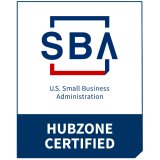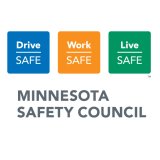
How often do workers need to be exposed to noise throughout the year before we are required to include them in our company's hearing conservation program?
OSHA's interpretation is stringent: only one day of noise exposure in excess of 85 dBA time-weighted average triggers inclusion in the hearing conservation program. But hearing loss prevention, like any other safety and health program, is not just a regulatory matter. For practical reasons and best practice, many companies provide protections to employees with only occasional noise exposures, as well as temporary workers and contractors. For more information, see NIOSH's webpage and OSHA's topic page.

Does working in noise increase the risk of accidents?
That's a great question. The risk of hearing loss due to loud noise is well known. But other potential risks from noise are not so clear. Is loud noise also to blame for accidents in the workplace? Are all workers at higher risk, or perhaps just those individuals who are hard of hearing? To learn more, see this article from CavCom‘s SoundBytes newsletter.

What is the difference between a hearing loss and a hearing shift?
Terminology for describing results of audiometric (hearing) tests can be confusing. Conventions/common uses can vary across settings and countries. In general, "hearing loss" is a term often used interchangeably with "hearing impairment" or "hearing difficulty," referring to hearing test results outside a pre-described normal range. That is, the tone(s) has to be louder than expected for the person to detect that tone and respond. The louder the tones need to be to elicit a response, then the more hearing loss the person is said to have. Hearing loss can be mild to severe, occur in one or both ears, affect only certain tones (frequencies), and can be due to many reasons. It is important to keep in mind that the term "hearing loss" describes results of a given audiogram and does not reflect how much the person's hearing ability may have changed over time.
A "shift" in hearing, on the other hand, is a term used to describe situations when a person's hearing ability has changed (usually for the worse). A shift cannot be determined by looking at one hearing test. Instead, a shift is calculated by comparing one hearing test to a previous or baseline audiogram. Regulatory agencies such as OSHA typically have a very strict definition for classifying when a change of hearing is significant enough to be called a shift (Standard Threshold Shift) and in need of hearing conservation program action. A different regulation, and different criteria, apply when determining if a shift in hearing is signficant enough to report on the OSHA Log.
It is important to remember that hearing loss and hearing shift describe two separate, and often independent, aspects of hearing function. It is possible for someone to have a severe hearing loss or impairment, but have no change or shift in hearing over a given timeframe. Likewise, it is possible for someone with very good hearing to show a significant shift while their overall hearing ability remains within the normal range (i.e. no "hearing loss"). Of course, the ultimate goal of an effective hearing conservation program is to prevent shifts, and in turn prevent hearing loss from developing or getting worse.

What is the combined noise level when two machines/noise sources that each measure 90 dBA individually are running simultaneously?
Actual sound levels must be measured with a calibrated sound level meter or dosimeter and will vary depending on equipment operation and the immediate physical environment, but a reasonable prediction is about 93 dBA. Decibels are calculated using a logarithmic scale, so they cannot be added, or subtracted, arithmetically. The human ear can detect an amazingly broad range of sound pressures, from very tiny changes in air pressure such as a rustling leaf to immense pressure waves, such as those associated with a roaring jet engine. For this reason, scientists came to agree on a more manageable method for computing sound levels. Sound pressure measurements are converted to decibels using a logarithmic scale in order to compress numeric values into a smaller, and less unwieldy, range.
Based on formulas used for calculating decibels, doubling the sound pressure results in a 3 dB increase. Halving sound pressure results in a 3 dB decrease. In our example, two noise sources each producing 90 dBA combine to produce approximately 93 dBA. For this reason, it's important to remember that small increases or decreases in dB can actually reflect large changes in sound energy. Another way to think about it, increasing noise by 3 dB could indicate a significant increase in noise exposure and hazard. In turn, using an engineering noise control or a more effective hearing protector to reduce an employee's noise exposure by 3 dB could be a significant achievement!





